Intel announces Arc 3, 5, and 7 discrete mobile GPUs for laptops to take on AMD, NVIDIA
Intel is back in the discrete GPU game with its Arc series of graphics processors for laptops. Here's what you need to know.
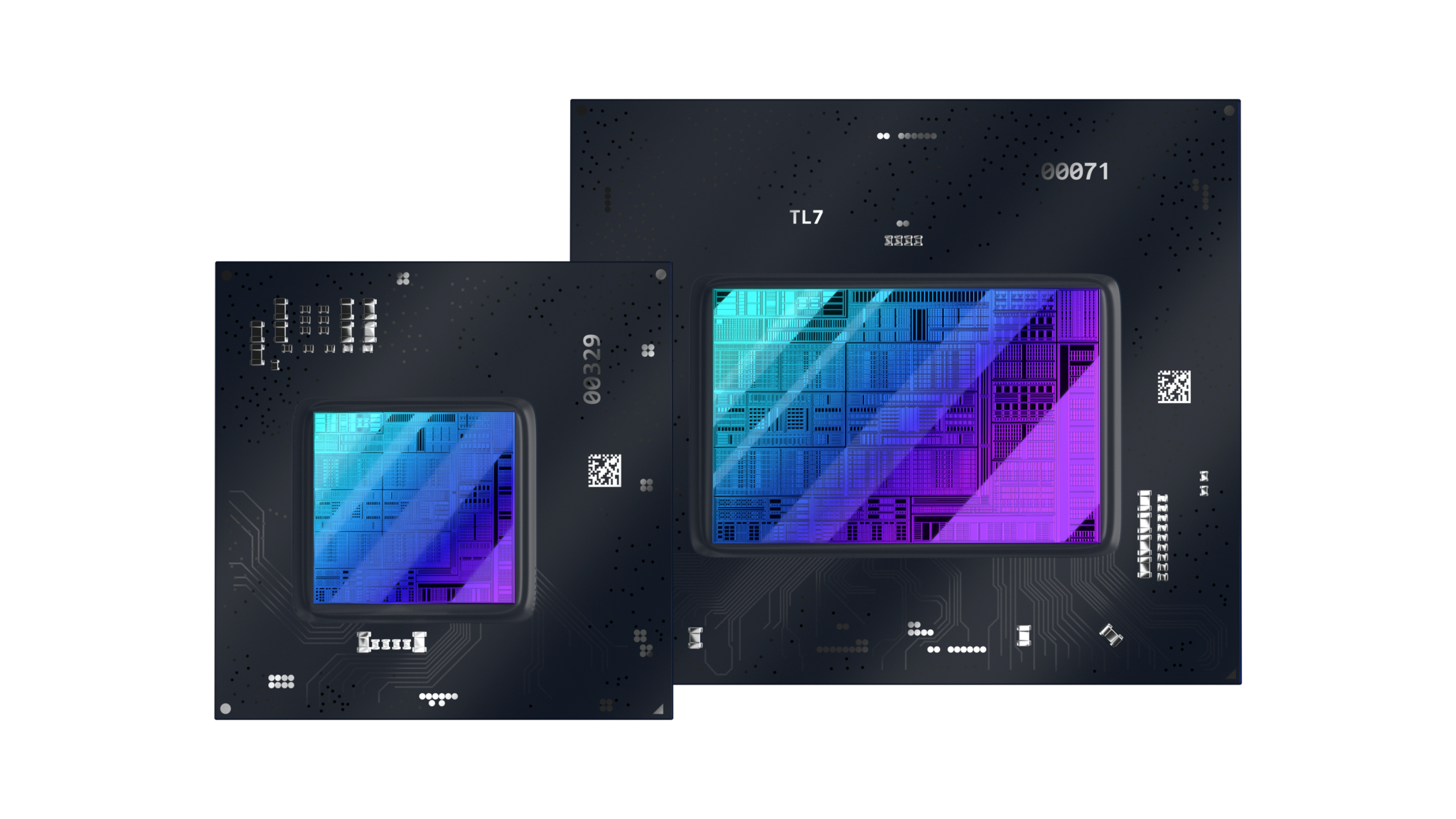
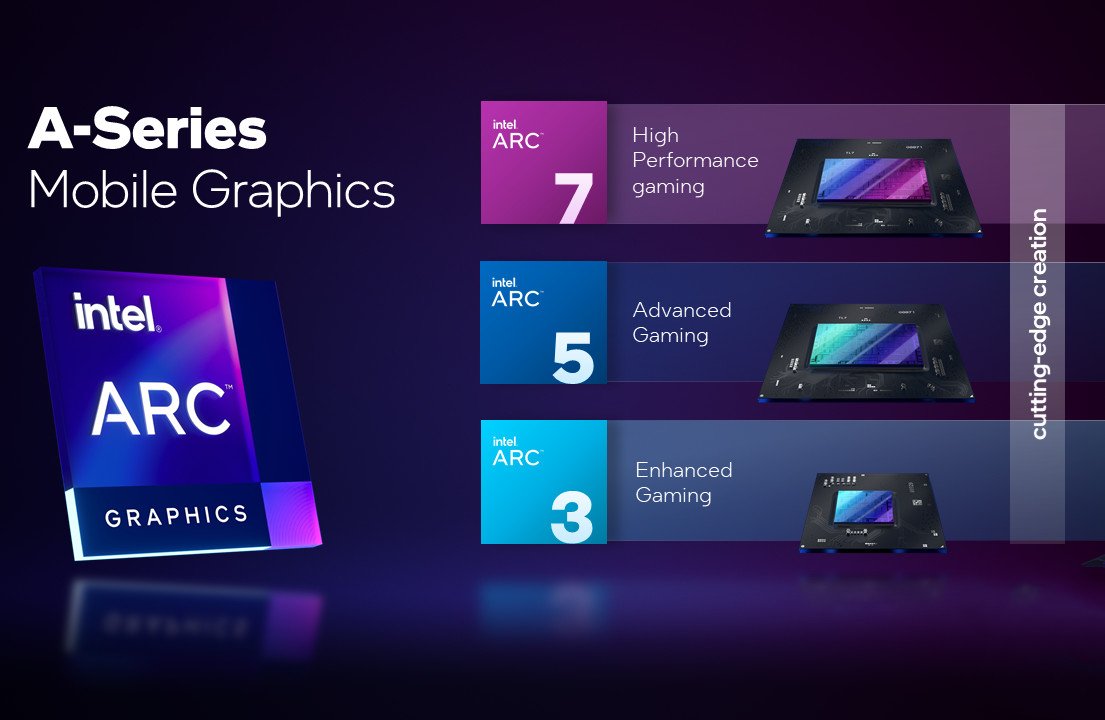
What you need to know
- Intel revealed its Arc A-series GPUs for laptops, including the Arc A3 for thin-and-lights.
- The new GPUs support AI-enhanced XeSS Upscaling, XMX powered AI acceleration, Intel Deep Link Technology, and AV1 codec for game streaming.
- Arc 3 GPUs are now shipping in laptops, while the more powerful Arc 5 and Arc 7 versions will be available in the summer of 2022.
- Desktop versions of Arc are also coming later this summer.
Today, Intel is taking the wraps off its Arc A-series line of discrete GPUs for laptops, and more specifically, the Arc 3 versions, which are now launching in new 12th Gen Windows laptops. The new GPUs exist in addition to current Intel Xe graphics, which are built into the latest 12th Gen mobile processors and should compete with NVIDIA and AMD in a welcomed turf battle.
There are three broad categories for the A-series chips, with Arc 3 being aimed at typical Evo/Ultrabook and entry-level laptops for "enhanced gaming." In contrast, Arc 5 ("advanced gaming") and Arc 7 ("high-performance gaming") are directed toward more traditional gaming and creator laptops.
From today's press release:
The foundation of products with Intel Arc A-Series GPUsand our platform-level approach to graphics innovation starts with our new Xe High-Performance Graphics microarchitecture (XeHPG), which is engineered for gamers and creators. We have packed a ton of great technology into XeHPG, including powerful Xe-cores with Intel XMXAI engines, a graphics pipeline optimized for DirectX 12 Ultimate with hardware acceleration for ray tracing, the XeMedia Engine tuned to accelerate existing and future creator workloads, and the XeDisplay Engine ready for DisplayPort 2.0 UHBR10.
While Arc 3 chips are launching now throughout the spring, Arc 5 and Arc 7 are not expected until later this summer.
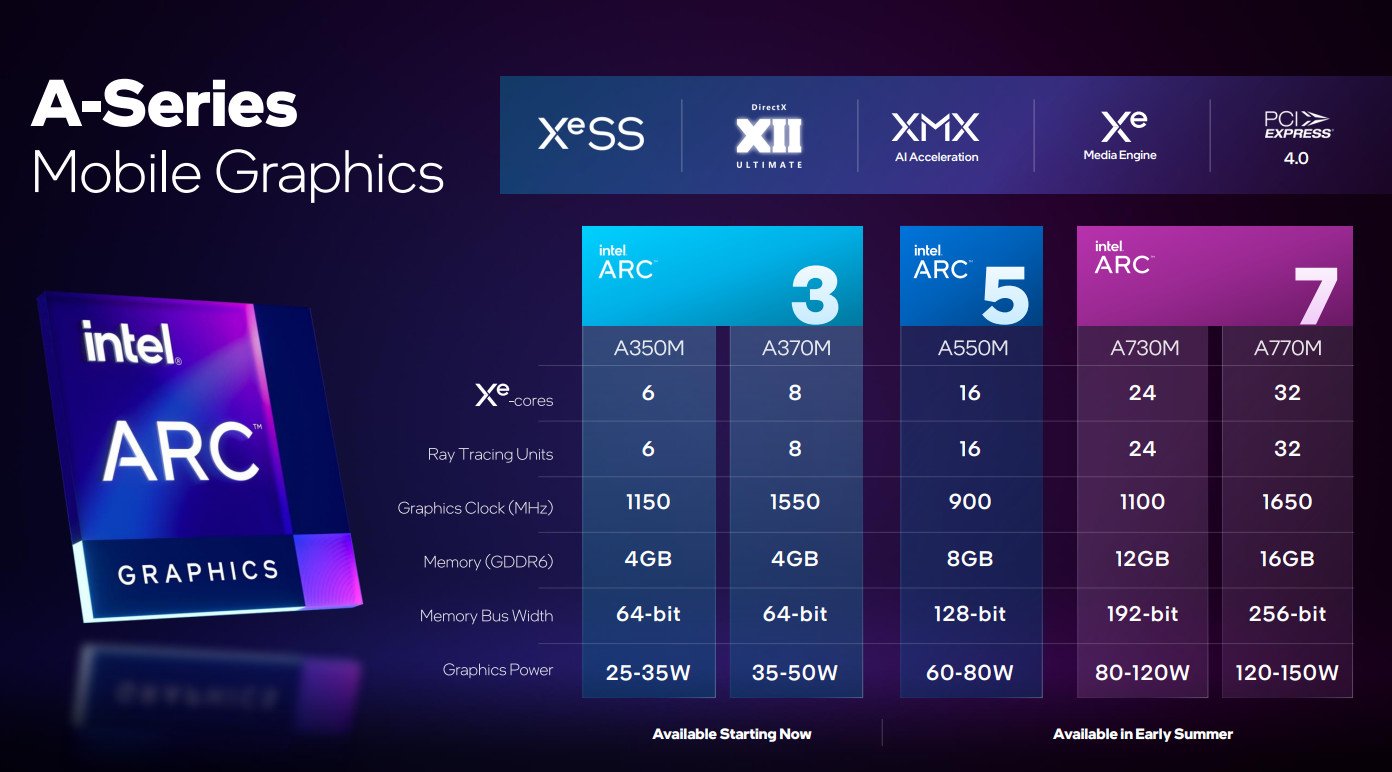
Turning to specs for Arc 3, there are two models to be aware of: Intel Arc 3 A350M and A370M. Both are similar in overall design with 4GB of GDDR6 memory and 64-bit memory bus width. However, the A370M, which is more powerful, gets 8 Xe-cores and 8 ray-tracing units (instead of 6 and 6 for the A350M), has a higher clock rate at 1,550 MHz (versus 1,150 MHz). Power draw can range from 35 to 50 watts in the A370m compared to the lighter 25 to 35 watts in the A350M.
Demo: The game Elden Ring streaming using AV1 and Intel Arc graphics.
At the high-end is Intel's Arc 7 A770M, which drops in 32 Xe-cores, 32 ray tracing units, 16GB of memory, a 256-bit memory bus, and can draw a substantial 120 to 150 watts of battery.
Get the Windows Central Newsletter
All the latest news, reviews, and guides for Windows and Xbox diehards.
By comparison, NVIDIA's forthcoming 64-bit RTX 2050 GPU for laptops has a slower boost clock at 1,477 MHz and draws 30 to 45 watts of power. NVIDIA also has the GeForce MX570 and MX550 for entry-level laptops, which should be shipping very soon. Intel's Arc 3 chips should be able to compete with these GPUs in terms of both price and performance.
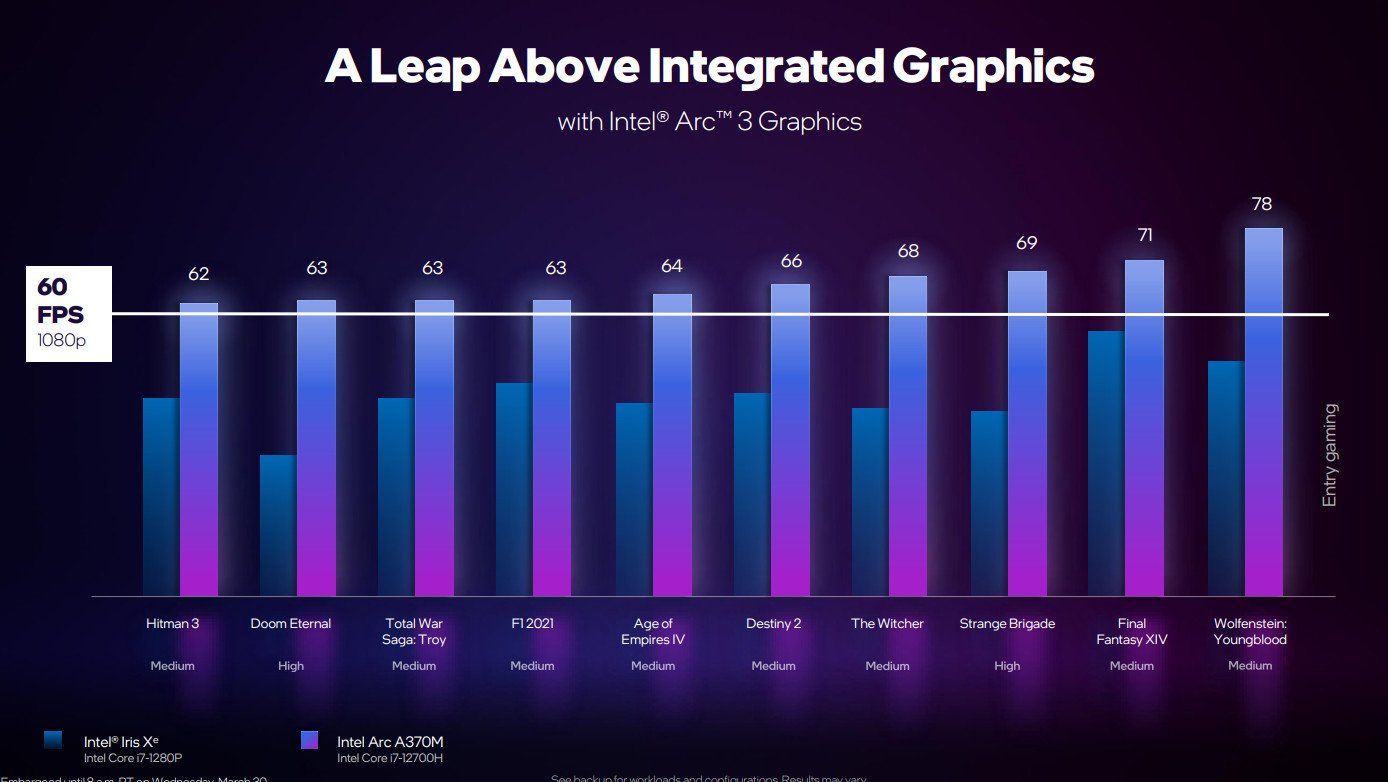
For performance, Intel compares itself to, well, itself. In some shared benchmarks, the Arc A370M hits between 60 and 78 frames-per-second (fps) at full HD (1080P) in various games like Hitman 3 (62 FPS), Destiny 2 (66 FPS), The Witcher (68 FPS), Doom Eternal (63 FPS), and Wolfenstein: Youngblood (78 FPS). All games were set to either medium or high presets, so there was no corner-cutting. By comparison, Intel's latest integrated Xe graphics found on the 12th Gen Core i7-1280P CPU fall closer to the 30 to 40 FPS range.
However, it should be noted that Intel paired the much more powerful Core i7-12800H CPU with Arc 3 against the Core i7-1280P with Iris Xe, making it not exactly a one-to-one comparison.
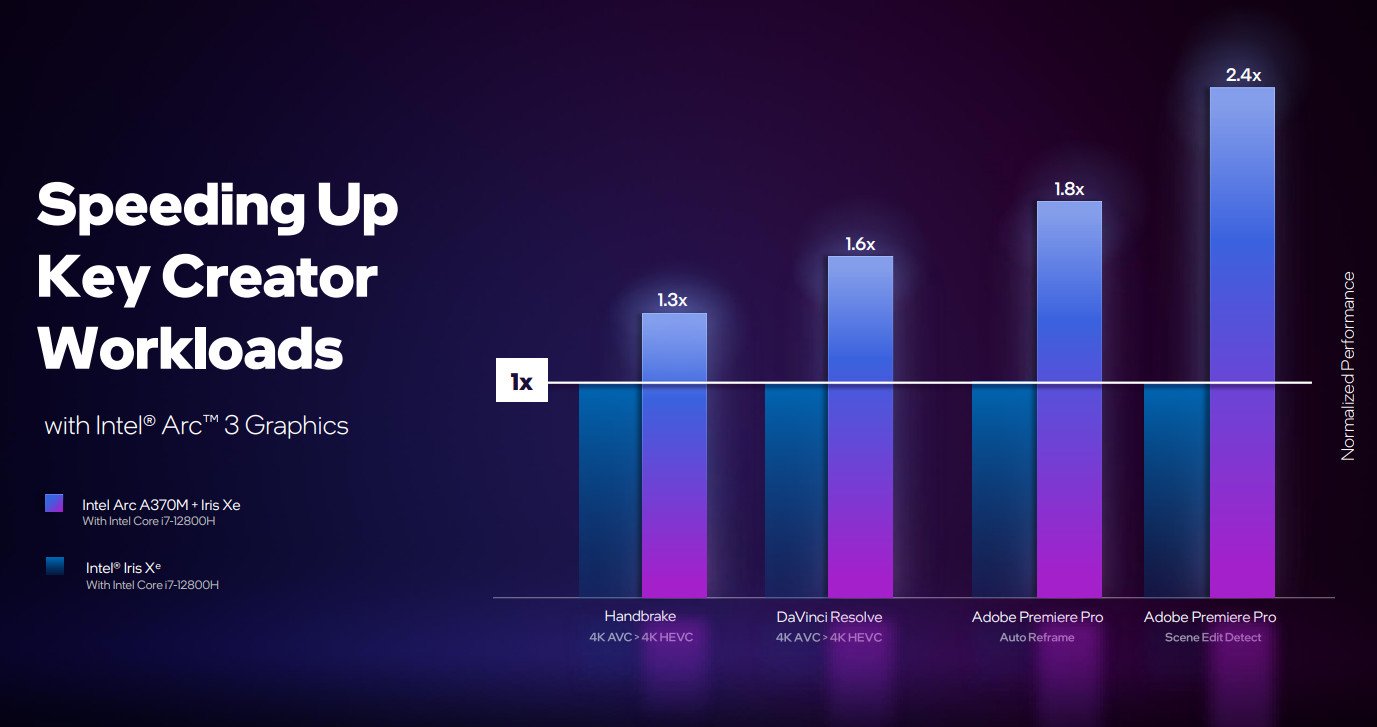
In creator workloads, similar gains are noted with the A370M (Core i7-12800H) gaining between 1.3x and 2.4x the performance against Iris Xe (Core i7-1280H) on tasks such as Handbrake, DaVinci Resolve, and Adobe Premiere Pro.
The Xe Display Engine is also no slouch supporting Adaptive Sync (sync the display's refresh rate), Speed Sync (speed up the latest frame, no tearing), and Smooth Sync (blurs distracting screen tears with a dithering filter).
Intel Arc: Supersampling, AV1, Deep Link, and more
Demo: Forthcoming game 'Dolmen' gets super-sampled and upscaled using Intel Arc.
Intel is also announcing some corresponding features for its Arc A-series chips for laptops aimed at gamers and creators (video and media editing).
Intel XeSS is similar to NVIDIA's DLSS (deep learning super sampling) and AMD FSR (FidelityFX Super Resolution) in that it uses technology (hardware-dependent AI for NVIDIA, hardware-independent post-processing algorithm for AMD) to upscale games to a higher resolution with sharper details.
In a video demo of Intel's technology, XeSS upscale a forthcoming game named Dolmen from 1080P up to 4K, with extra clarity in detail from the XeSS applied version.
Intel Deep Link is similar to AMD SmartShift in that it can draw extra resources when required for specific tasks. Intel's Dynamic Power Share lets the CPU draw more power when the GPU is underutilized, while the GPU can draw more power when the situation is reversed.
Demo: Intel Deep Link and XMX with Topaz Labs.
Another feature of Deep Link is Hyper Encode, which can simultaneously leverage all the available media encode engines on the CPU (iGPU) and dGPU. The same principle applies to Intel Hyper Compute with XMX, which uses all the available compute engines or AI accelerators on an Intel platform to "accelerate creation," such as Topaz Labs AI-enabled photo and video enhancing applications.
AOMedia Video 1 (AV1), developed by the Alliance for Open Media (AOMedia), which includes Microsoft, Arm, Apple, Netflix, Samsung, NVIDIA, Amazon, is still very new. Intel is supporting the tech directly in its Arc A-series GPUs. Indeed, Intel claims this is the industry's first full AV1 hardware acceleration GPU both for decoding and encoding.
Compared to H.264 (50% less efficient) and HEVC (20% less efficient), AV1 is royalty-free, open-source, and it can do more with less ensuring better fidelity for game and video streaming in the coming years. Apps such as FFMPEG, Adobe Premiere Pro, DaVinci Resolve, XSplit, and Handbrake already support AV1 today.
Intel Arc: Pricing and availability
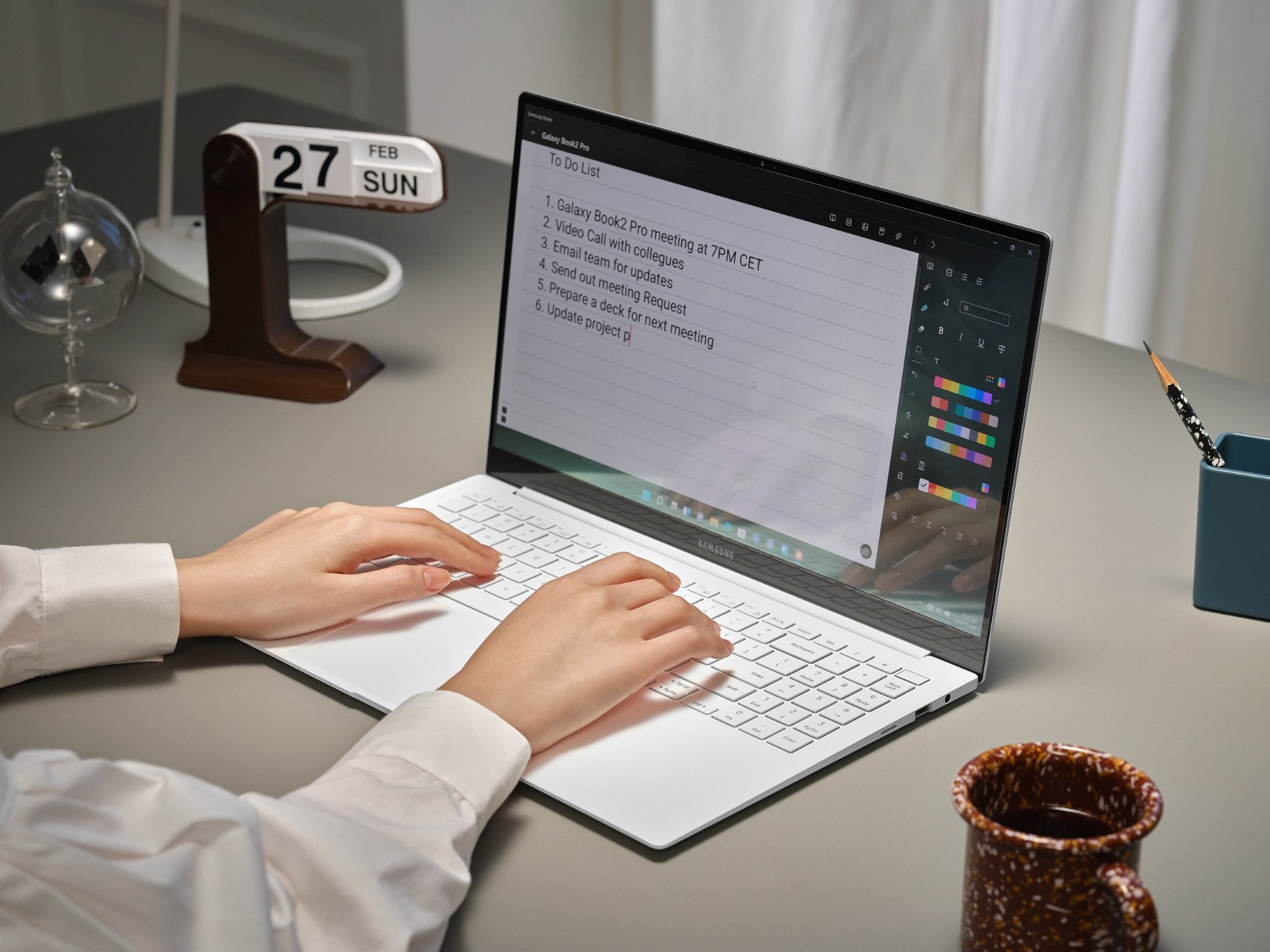
The first laptop to launch/is available for preorder with Intel's Arc 3 graphics is the new 15-inch Galaxy Book2 Pro (not the 360 models). However, other laptops are on the way from basically every PC OEM around, including Lenovo, HP, Dell, Acer, ASUS, and MSI. The most affordable of which starts at $899.
We'll be putting Arc 3 (and 5 and 7 later this summer) through its paces in our forthcoming reviews. It should be interesting to see how Intel's first discrete GPU in a long time competes against NVIDIA and AMD. At least on paper, Intel seems to be getting a lot right out the gate.
Finally, Intel teases that for "desktop enthusiasts," its Intel Arc graphics add-in-cards will also be coming this summer.

Daniel Rubino is the Editor-in-chief of Windows Central. He is also the head reviewer, podcast co-host, and analyst. He has been covering Microsoft since 2007 when this site was called WMExperts (and later Windows Phone Central). His interests include Windows, laptops, next-gen computing, and wearable tech. He has reviewed laptops for over 10 years and is particularly fond of 2-in-1 convertibles, Arm64 processors, new form factors, and thin-and-light PCs. Before all this tech stuff, he worked on a Ph.D. in linguistics, performed polysomnographs in NYC, and was a motion-picture operator for 17 years.
